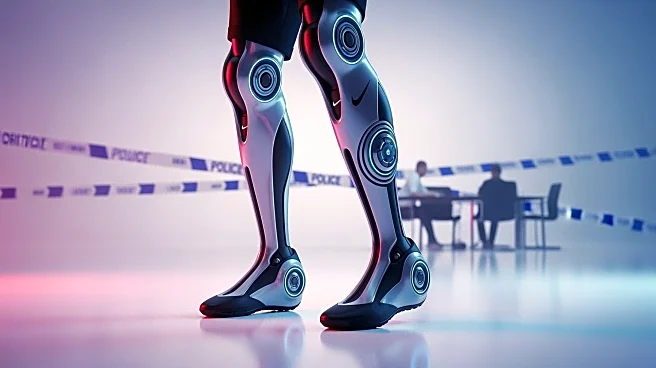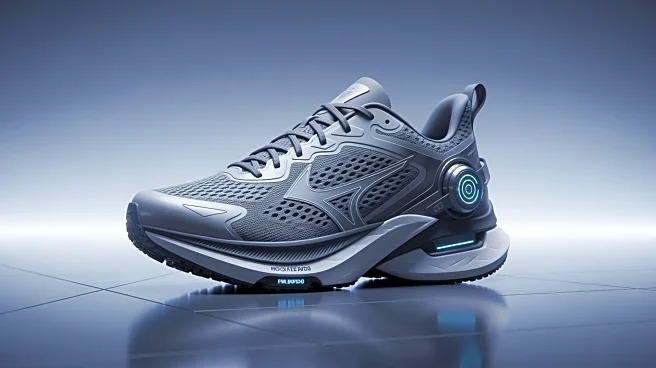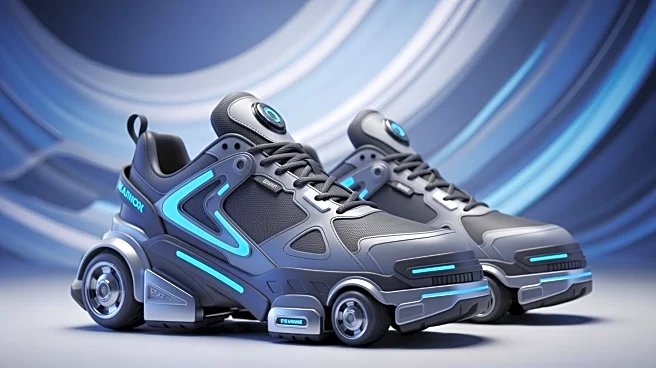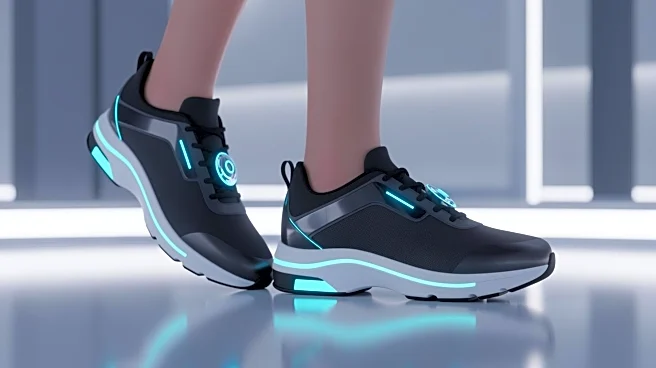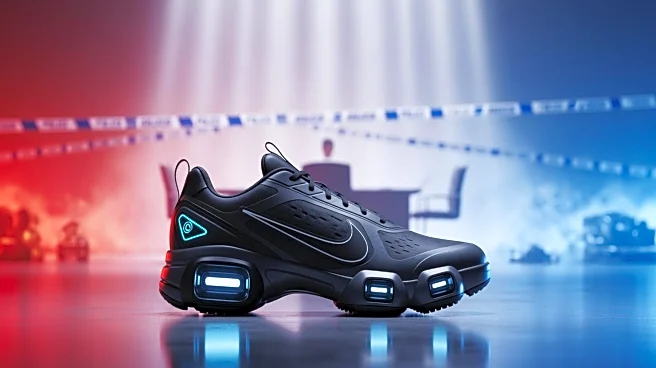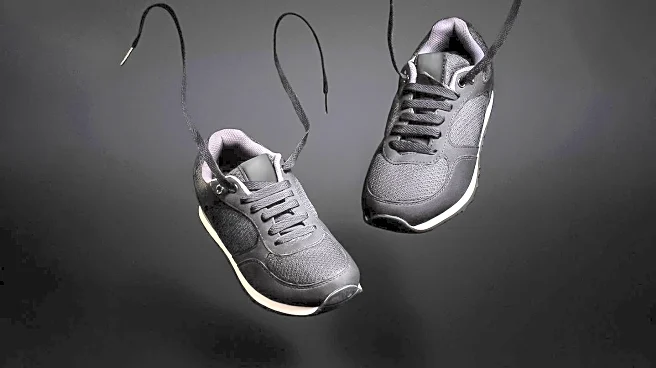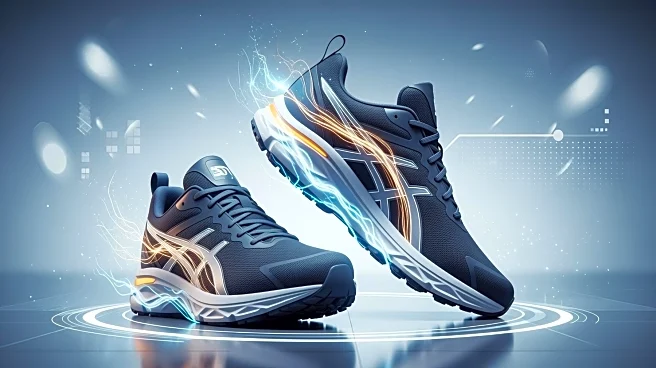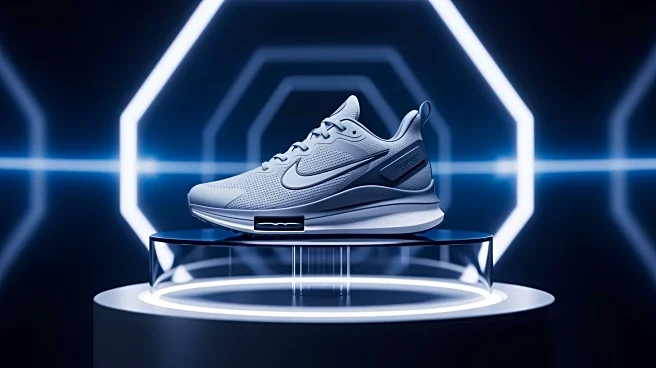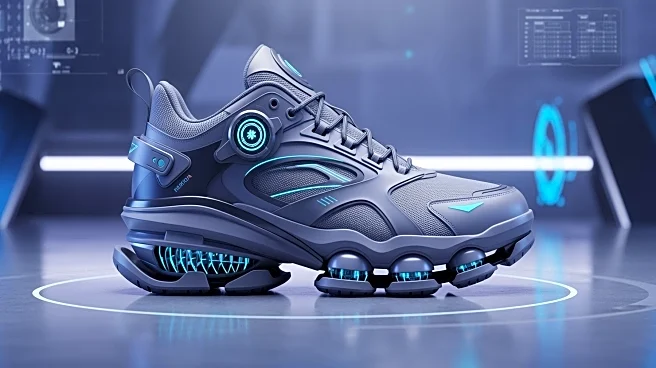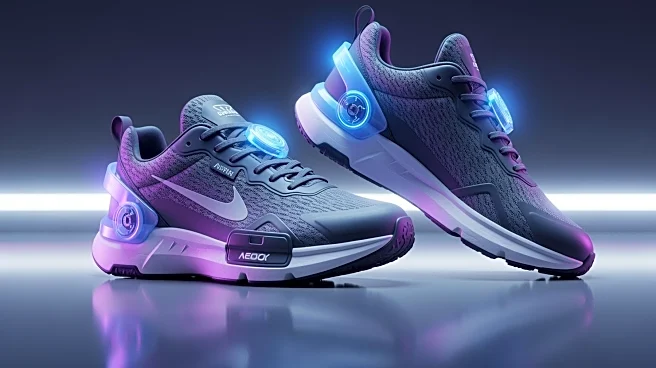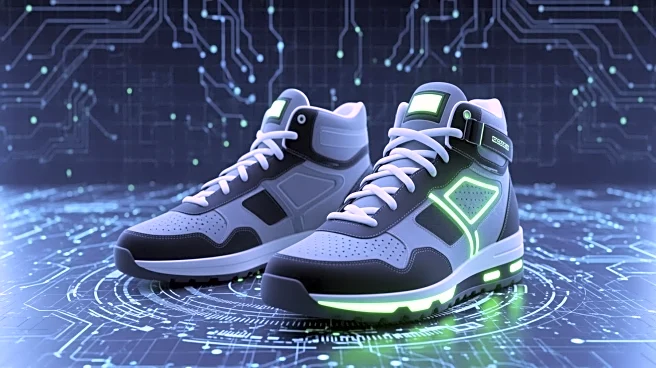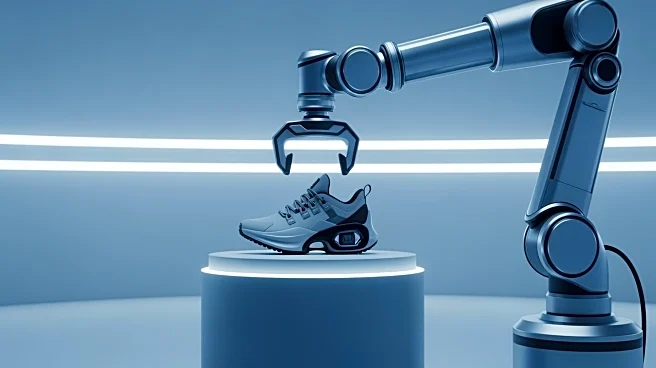What's Happening?
Nike has unveiled Project Amplify, a new robotic-powered footwear system designed to enhance running and walking experiences. The system integrates a motor, drive belt, and rechargeable cuff battery into a carbon fiber-plated running shoe, aiming to augment
natural lower leg and ankle movement. Project Amplify is targeted at athletes with mile paces between 10 and 12 minutes, rather than competitive runners. Developed in collaboration with robotics partner Dephy, the system is still in the testing phase, with plans for a broader consumer launch in the coming years. Nike has also released the Hyperboots, shoes designed for warmups and cooldowns, featuring heating and air-compression massage technology.
Why It's Important?
Nike's Project Amplify represents a significant innovation in sports technology, potentially transforming the way people engage in running and walking activities. By making these activities more accessible and enjoyable, the system could appeal to a broader audience, including those who may not typically engage in regular exercise. This development highlights the growing intersection of technology and fitness, where advancements in robotics and wearable tech are increasingly influencing consumer products. The introduction of such technology could also impact the sportswear market, prompting competitors to explore similar innovations to meet evolving consumer demands.
What's Next?
As Project Amplify progresses through testing, Nike is expected to refine the technology and address any challenges before its public release. The company's collaboration with Dephy suggests a continued focus on integrating advanced robotics into consumer products. The market response to the Hyperboots, priced at $900, may provide insights into consumer willingness to invest in high-tech footwear. Additionally, the success of Project Amplify could influence future product development strategies within the sportswear industry, encouraging further exploration of robotic and wearable technologies.
Beyond the Headlines
The introduction of robotic-powered footwear raises questions about the future of personal fitness and the role of technology in enhancing human capabilities. As such innovations become more prevalent, ethical considerations regarding accessibility and the potential for technology to replace traditional forms of exercise may arise. The long-term impact on health and fitness culture, as well as the potential for increased reliance on technology for physical activity, are important factors to consider. This development also underscores the importance of balancing technological advancement with the preservation of natural human movement and exercise.
